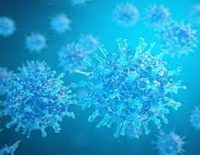One in every 53 Indian women to get cervical cancer in lifetime: Study

Cervical cancer continues to be a significant global health concern, claiming millions of lives annually. According to recent statistics, all over the world approximately 1.4 crore new cancer cases are diagnosed each year, resulting in around 80 lakh deaths. Among these, cervical cancer stands out as a major public health issue, especially in developing countries like India, contributing to a quarter of the world’s burden.
Dr. Seema Manuja, Director, Gynaecology, Sarvodaya Hospital Faridabad, said, “In India, cervical cancer ranks as the second most common female cancer, accounting for 10% of all cases. Shockingly, approximately 1 in every 53 women in India will be affected by cervical cancer in their lifetime, compared to 1 in 100 women in developed countries. The incidence and mortality rates per 100,000 women in India stand at 14.7 and 9.2, respectively, showcasing the urgent need for comprehensive strategies to address this alarming situation”.
The Federation of Obstetric and Gynecological Societies of India (FOGSI) has taken a bold step towards tackling this issue by collaborating with the American Cancer Society (ASC) and the Cancer Foundation of India (CFI). Together, they have launched a groundbreaking project to train over 10,000 Fogsians in the science and counseling of Human Papillomavirus (HPV) vaccination, a critical step in preventing cervical cancer.
While there has been a decline in cervical cancer incidence and mortality over the past three decades, there is still work to be done. The World Health Organization (WHO) has set ambitious targets for cervical cancer elimination by 2030, including achieving 90% HPV vaccination coverage for girls aged 9-15, screening 70% of women with cervical cancer screening tests by the ages of 35 and 45, and ensuring 90% of women with cervical disease receive treatment.








Comments